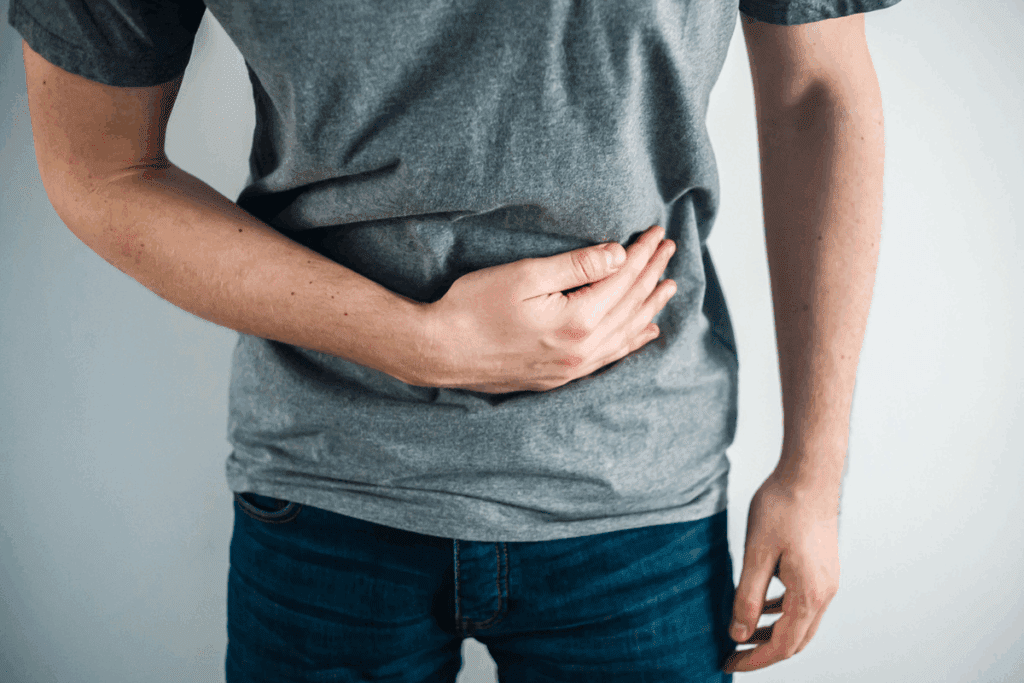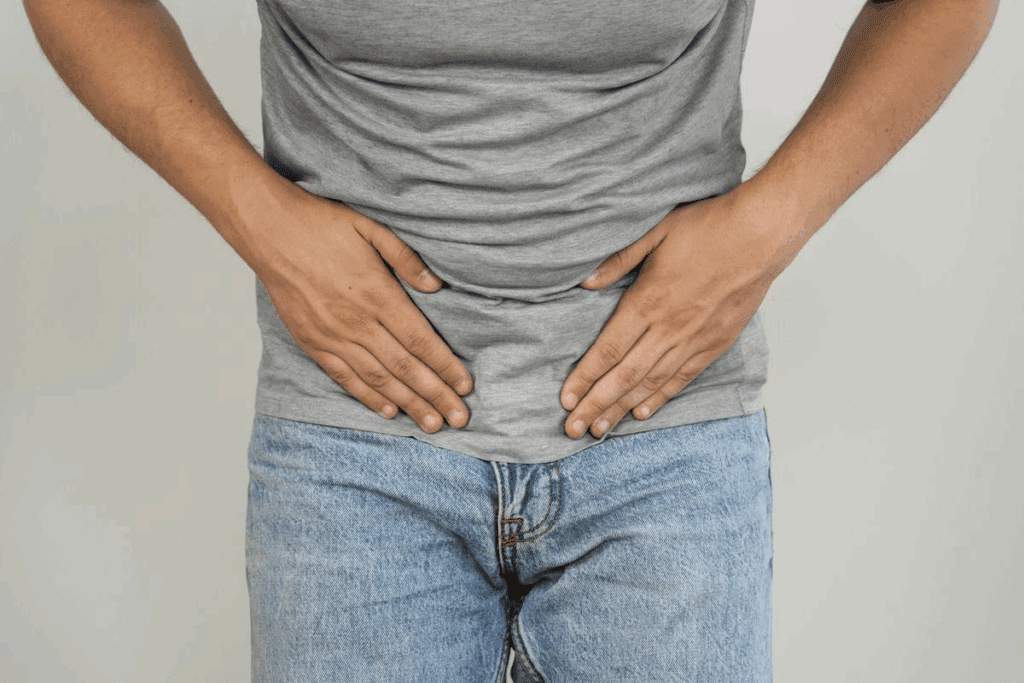Last Updated on October 30, 2025 by Bilal Hasdemir

Learn how long after gallbladder surgery can i lift 50 pounds safely and avoid injury during recovery.
Recovering from gallbladder surgery means following post-operative instructions carefully. This ensures a safe and effective recovery. A big concern is when you can start doing daily activities again, like lifting heavy things or driving.
Doctors usually tell patients not to lift more than 10-15 pounds for 2-4 weeks after surgery. This rule helps prevent problems and aids in healing. It’s important to understand how serious the surgery is and to follow the recommended steps for a smooth recovery.

It’s important to know how the gallbladder helps with digestion to understand why it might need to be removed. The gallbladder is a small, pear-shaped organ under the liver. It plays a key role in our digestive system.
The gallbladder stores and concentrates bile, a digestive fluid from the liver. Bile helps break down fats in the small intestine. This makes fats easier to absorb. Even without the gallbladder, bile can reach the intestine through other ducts.
Gallbladder removal, or cholecystectomy, is often needed for gallstones and other diseases. Gallstones can cause pain, inflammation, and infection. Other reasons include biliary dyskinesia and gallbladder cancer, though this is rare.
In the United States, gallbladder surgery is a common procedure. The American College of Surgeons reports hundreds of thousands of cholecystectomies each year. Most are done laparoscopically, which means quicker recovery times compared to open surgery.

There are many ways to remove the gallbladder, each suited to different needs. The choice depends on the patient’s health, why they need surgery, and the surgeon’s opinion.
Laparoscopic cholecystectomy is the most common method. It’s a minimally invasive surgery with small incisions in the abdomen. A laparoscope with a camera lets the surgeon see the gallbladder on a screen.
Benefits of Laparoscopic Cholecystectomy:
Open cholecystectomy involves a bigger incision to directly access the gallbladder. It’s less common but needed in some cases.
Reasons for Choosing Open Cholecystectomy:
Single-incision laparoscopic surgery (SILS) is a newer approach. It uses just one incision, usually at the navel, for all instruments and the laparoscope.
Advantages of SILS:
As technology improves, so will gallbladder surgery options. This means more choices for patients based on their needs.
To know if gallbladder surgery is major, we need to look at its details and risks. This surgery, called cholecystectomy, is done to fix gallstones and other problems with the gallbladder.
Major surgery is complex and takes a long time to recover from. It also has big risks and changes the body a lot. Minor surgery is simpler, safer, and heals faster.
What makes a surgery major or minor includes:
Gallbladder surgery is major for a few key reasons. It involves cutting into the belly, which can lead to infections or scarring. It also needs general anesthesia, which has its own dangers. And, while recovery times vary, they are generally long.
Here’s why gallbladder removal is seen as major surgery:
The dangers of gallbladder surgery are serious. They can make the surgery seem major. These dangers include:
Knowing these risks helps patients make better choices. It also helps doctors plan for recovery and manage expectations.
Knowing what to expect after gallbladder surgery can make things easier. The first few days are very important for a good recovery.
The time you spend in the hospital depends on the surgery type. Laparoscopic cholecystectomy, the most common, usually means you go home the same day or the next. Open cholecystectomy, on the other hand, might keep you in the hospital for 2 to 5 days.
| Surgery Type | Typical Hospital Stay |
| Laparoscopic Cholecystectomy | Same day or 1 day |
| Open Cholecystectomy | 2 to 5 days |
Managing pain after surgery is key to a smooth recovery. Doctors usually give pain meds to help with this. It’s important to take the meds as directed and tell your doctor if the pain is too much.
Pain Management Strategies:
At first, you’ll need to avoid heavy activities to heal properly. This means no heavy lifting, bending, or hard exercises. Your doctor will tell you when it’s okay to start doing more.
Key Activity Restrictions:
It’s important to follow post-operative care instructions after gallbladder surgery. This helps avoid risks and speeds up healing. Taking good care during recovery can greatly affect your surgery’s success.
Good wound care is key to avoiding infection and a smooth recovery. Keep the wound area clean and dry, and follow your surgeon’s advice on dressing changes. Watch for signs of infection like redness, swelling, or discharge.
Also, watch the incision sites for any unusual changes. If you see signs of infection, call your healthcare provider right away.
Your diet may need to change after gallbladder surgery. Start with a low-fat diet to ease digestive discomfort. Slowly add different foods to your diet, watching how your body reacts.
Keeping a food diary can help track foods that upset your stomach. It’s often advised to eat smaller, more frequent meals. Also, avoid high-fat or greasy foods.
Managing your medications is vital for pain control after surgery. Take your pain medication as directed by your doctor. Be aware of any side effects.
Talk to your healthcare provider about reducing your pain medication as you heal. Sometimes, over-the-counter pain relievers are enough as you recover.
Knowing when to lift 50 pounds after gallbladder surgery is key for a safe recovery. Usually, doctors tell patients to avoid heavy lifting for weeks after surgery.
Most doctors say to lift no more than 10-15 pounds for 2-4 weeks after surgery. This helps prevent straining the abdominal muscles and lets the body heal right.
Lifting 50 pounds is heavy, and when you can start again varies. Most surgeons suggest slowly increasing the weight you lift over time.
Several things can affect how soon you can lift 50 pounds after surgery. These include:
It’s important to slowly increase the weight you lift during recovery. Start with light weights and gradually add more as your body gets stronger. This helps avoid injury and ensures a smooth recovery.
Before lifting 50 pounds, look for these signs that you’re ready:
It’s vital to listen to your body and not rush the recovery process. If you feel pain or discomfort when lifting, stop right away and talk to your healthcare provider.
After gallbladder surgery, it’s best to start slowly with physical activities. This method helps avoid problems and aids in healing. Begin with simple movements and then add more challenging exercises as you get stronger.
In the first two weeks, stick to light activities that don’t hurt your belly. Good choices include:
These activities keep blood flowing, prevent clots, and support your recovery.
As you heal, you can start doing more moderate activities. This might include:
Always pay attention to your body and stop if you feel pain or discomfort.
After four weeks, you can usually go back to your usual activities and exercises. But remember to listen to your body and don’t rush.
Here are some good exercises for recovery:
These exercises help with physical recovery and build strength and endurance.
After gallbladder surgery, many patients wonder when they can drive again. The answer depends on the surgery type, how well you’re recovering, and if you can drive safely.
Before driving, think about your safety. Make sure you can drive without pain or distraction. Sudden movements or stopping should not hurt too much.
Also, think about how surgery affects your reaction time and driving skills. Be honest about your abilities to stay safe on the road.
Most people can drive again about 1 week after surgery, if they’re not on strong pain meds. This time helps you recover and lowers driving risks.
Always listen to your doctor’s advice. They know best based on your recovery.
Strong pain meds can make driving dangerous. They can make you sleepy, slow your reactions, and cloud your judgment. Don’t drive on these meds because it’s too risky.
To see if you’re ready to drive, ask yourself:
If you say “yes” to these and feel sure you can drive safely, you might be ready. But always check with your doctor first.
Gallbladder removal, or cholecystectomy, is a common surgery but serious. It’s done to treat gallstones that cause pain or infection. Knowing how serious it is helps patients prepare for recovery and long-term changes.
Recovering from gallbladder surgery can be tough. Patients often feel pain, discomfort, and tiredness. Effective pain management is key during this time.
Doctors usually give pain meds to help with the pain. Patients can start doing light activities a few days after surgery. But, it’s important to follow the surgeon’s instructions on activity, diet, and wound care to avoid complications.
Living without a gallbladder might mean changing your diet. The gallbladder stores bile for fat digestion. Without it, bile goes straight to the small intestine, causing digestory changes.
Patients are often told to eat less fat at first. Then, they can try fatty foods to see how they react. Most people adjust well, but some might have ongoing digestive issues like diarrhea or fatty stools. These can usually be managed with diet and sometimes medication.
Gallbladder removal surgery works well for most people, easing pain from gallstones. The surgery is safe, thanks to laparoscopic methods. But, like any surgery, there are risks.
Laparoscopic gallbladder removal recovery is faster than other abdominal surgeries. This is because it uses smaller incisions, causing less damage. Patients usually have less pain and can get back to normal sooner than with open surgery.
But, recovery can differ based on health, age, and complications. It’s important to talk to your doctor about your situation and any worries you have.
Knowing when you can go back to work after gallbladder surgery is key for a smooth recovery. The time it takes can vary a lot. It depends on your job and how fast you heal.
People with office or sedentary jobs usually go back to work in 1-2 weeks after surgery. But, make sure you’re not in too much pain. Pain could get worse if you do too much at work.
If your job is hard, like lifting heavy things, you might need more time off. You could be out for 4-6 weeks. This extra time helps your body heal better and avoid problems.
Your doctor might suggest special rules or changes at work. This could mean not lifting heavy things or taking breaks. Tell your boss about these needs to stay safe and do well at work.
Talking well with your boss is important for going back to work smoothly. Share your recovery plan, any work changes you need, and any doctor’s notes. Working together helps avoid problems and keeps you safe.
Going back to work after gallbladder surgery needs careful planning. Knowing the usual times and talking well with your boss helps you do well at work.
Knowing the risks of gallbladder removal is key for a smooth recovery. Gallbladder surgery is usually safe, but complications can happen. Being aware of these risks and knowing when to seek help can greatly improve your recovery.
After gallbladder surgery, watch how your body reacts. Signs of trouble include:
If you notice any of these symptoms, contact your doctor right away. Quick action can stop small problems from getting worse.
Most people recover well from gallbladder surgery. But, some may face long-term issues. These can include:
Regular check-ups with your doctor can help catch and manage these problems early.
Some situations need immediate help. If you have any of these, call emergency services or go to the nearest emergency room:
As one doctor said, “Quickly spotting complications can greatly help patients.” Being informed and watching your recovery closely can greatly improve your health.
In summary, while complications after gallbladder surgery are rare, knowing the risks and when to call your doctor is vital. By understanding warning signs and emergency situations, you can actively care for yourself after surgery.
Gallbladder surgery recovery times differ for everyone. But most people can get back to normal in a few weeks. Knowing the recovery timeline is key for a smooth and safe healing process.
Important recovery tips include slowly increasing physical activity and following dietary advice. It’s also important to watch out for any complications. Always follow your doctor’s instructions and go to follow-up appointments to ensure a good recovery.
Understanding what to expect during recovery helps patients prepare for the journey ahead. This knowledge lets them make smart choices about their care. It also helps them confidently return to their usual routines.
Yes, gallbladder surgery is major. It’s complex and comes with risks.
You should avoid lifting 50 pounds for 4-6 weeks after surgery. But, this can change based on your recovery and surgery type.
You can drive in 1-2 weeks after surgery. But, check how pain meds affect you and if you’re ready to drive safely.
Yes, removing the gallbladder is a big deal. It needs careful care after and following recovery rules.
It’s usually safe but comes with risks. Know the short and long-term effects of not having a gallbladder.
Work return times vary. Office jobs might let you back sooner (1-2 weeks). Jobs needing physical effort might take longer (4-6 weeks or more).
Watch for infection signs, severe pain, or complications like fever, chills, or unusual discharge. Seek help right away if you notice these.
Living without a gallbladder can change digestion. But, most people adapt well, and surgery is usually safe.
Yes, you can start with light weights and slowly increase. Always follow your doctor’s advice.
Start with gentle exercises like walking or stretching. Then, slowly add more intense activities as your body heals.
ShrEstha, G. (2023). Spigelian hernia: A rare case presentation and review of literature. Journal of Surgical Case Reports. Retrieved from https://www.sciencedirect.com/science/article/pii/S2210261223002079
Subscribe to our e-newsletter to stay informed about the latest innovations in the world of health and exclusive offers!
WhatsApp us